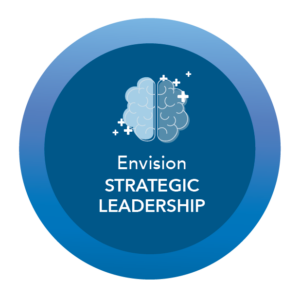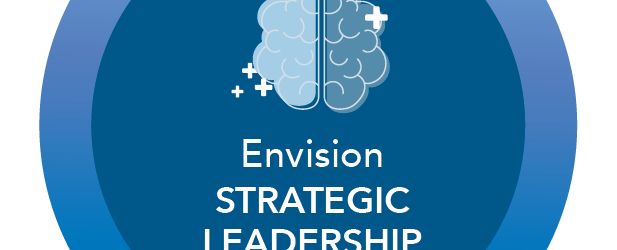The Fifth and Final Step in Effective Leadership

Strategic leadership is the culmination of the journey in the 5 Pillars of Effective Leadership. After developing personal insight, emotional intelligence, intentional relationships, and servant leadership, the final step is learning to think and act strategically.
Strategic leadership ensures that your decisions are purposeful, forward-thinking, and aligned with your core values and goals.
It’s the step where vision meets action, and it profoundly impacts the structure and success of your business.
The Importance of Strategic Leadership
Strategic leadership is about stepping back, looking ahead, and envisioning the path forward. It requires a leader to think beyond the immediate challenges and consider the broader influences and potential scenarios that could impact their organization.
This level of foresight is essential for navigating uncertainty, anticipating opportunities, and preparing for adversity.
As a leader, you must ask yourself: Are you getting to a destination by design, or are you arriving by default? Leadership by design requires setting intentional goals and taking deliberate actions to achieve them.
Leadership by default leaves outcomes to chance, relying on the flow of circumstances rather than purposeful planning. While both approaches have their merits, strategic leadership emphasizes control over the trajectory of your business and life.
Building Strategic Leadership
Strategic leadership involves a series of steps that blend vision with practicality. Here’s how to develop and implement it effectively:
- Envision the Future: Start by defining what success looks like. Take the time to reflect on your core values, intrinsic motivations, and passions. Whether for your personal development or the company’s goals, clarity about the future is critical.
- Plan for Contingencies: Strategic thinking involves asking “what if” questions. Anticipate potential obstacles, changes in the market, or shifts in legislation. By preparing for different scenarios, you’re better equipped to adapt without losing sight of your goals.
- Create an Action Plan: Vision without action is merely a dream. Transform your goals into tangible steps that you and your team can follow. Utilize tools like task management systems to assign clear responsibilities and ensure accountability.
- Leverage Support Systems: Strategic leadership is not a solo endeavor. Build a team that shares your vision and values. The servant leadership and intentional connections you’ve developed earlier in your journey will play a vital role in rallying support and ensuring alignment.
- Embrace Resilience and Persistence: Challenges and setbacks are inevitable. Strategic leaders understand that every adversity brings an opportunity. Instead of giving up, they adapt and find new ways to move forward while staying true to their core values.
Strategic Leadership in Action
A strategic leader doesn’t just create plans; they actively manage and adapt them as circumstances evolve. For example, if a sudden market shift affects your business, strategic leadership allows you to pivot effectively while maintaining your overarching goals. By anticipating challenges and fostering a culture of resilience, you position your organization to thrive under any conditions.
Moreover, strategic leadership impacts the structure of your business by:
- Aligning Goals with Values: Decisions are based on what truly matters, creating consistency and purpose across all levels of the organization.
- Enhancing Collaboration: Clear goals and action plans foster teamwork and ensure that everyone understands their role in achieving success.
- Driving Innovation: Strategic thinking encourages leaders to think outside the box and explore new avenues for growth and improvement.
- Sustaining Long-Term Success: With a focus on the future, strategic leadership ensures that your organization remains adaptable and competitive over time.
Strategic leadership is the bridge between vision and reality. To embrace this step, take time to reflect on your goals, evaluate your plans, and align your actions with your core values.
Set aside time for critical thinking and encourage your team to do the same. Remember, the hardest part of leadership is leading yourself, but once you master this, you can guide others with clarity and purpose.
Effective leadership doesn’t happen by accident. It’s the result of intentional effort, self-reflection, and strategic planning. By committing to strategic leadership, you ensure that your journey—and the journey of those you lead—is one of design, resilience, and success.
Book a Call With Me Today to Start Your Leadership Transformation

